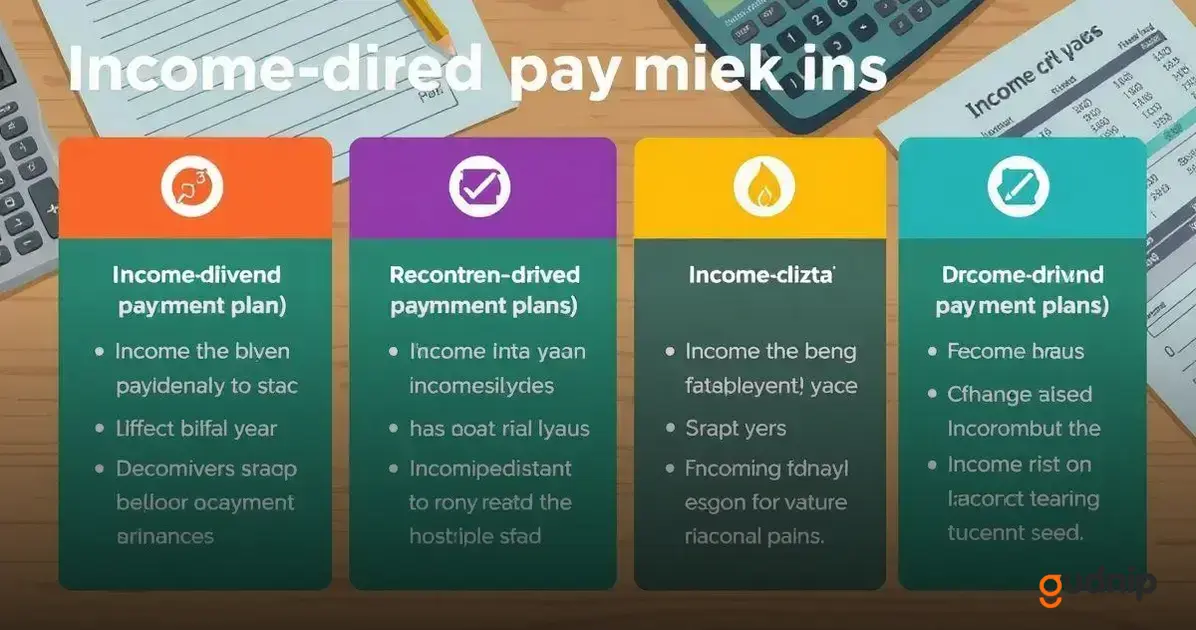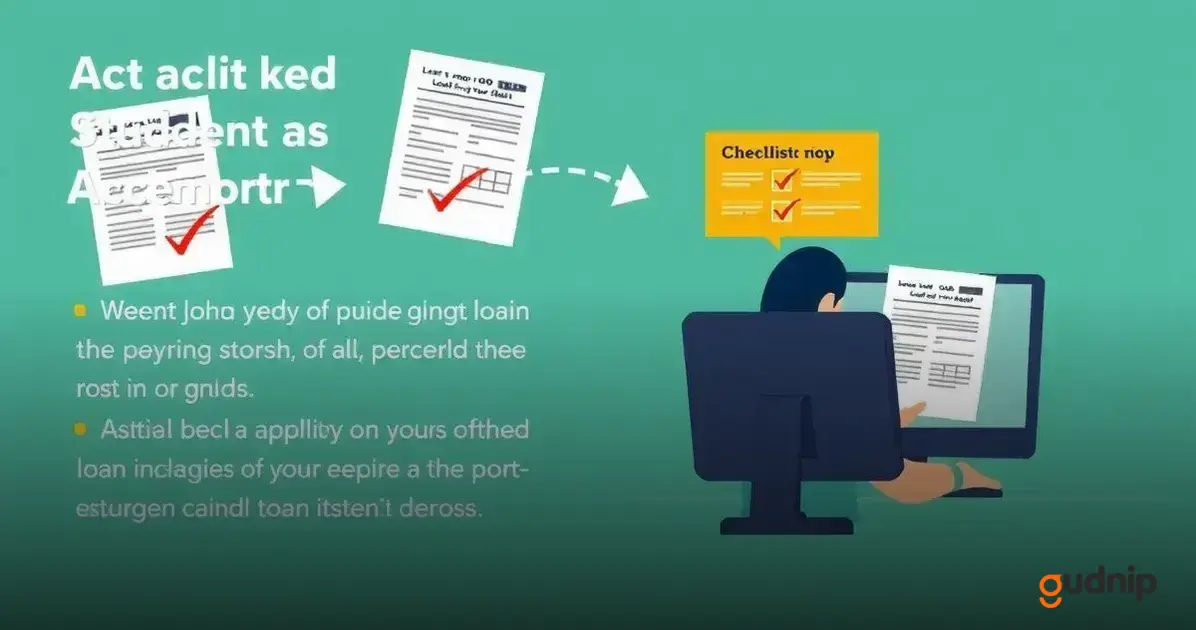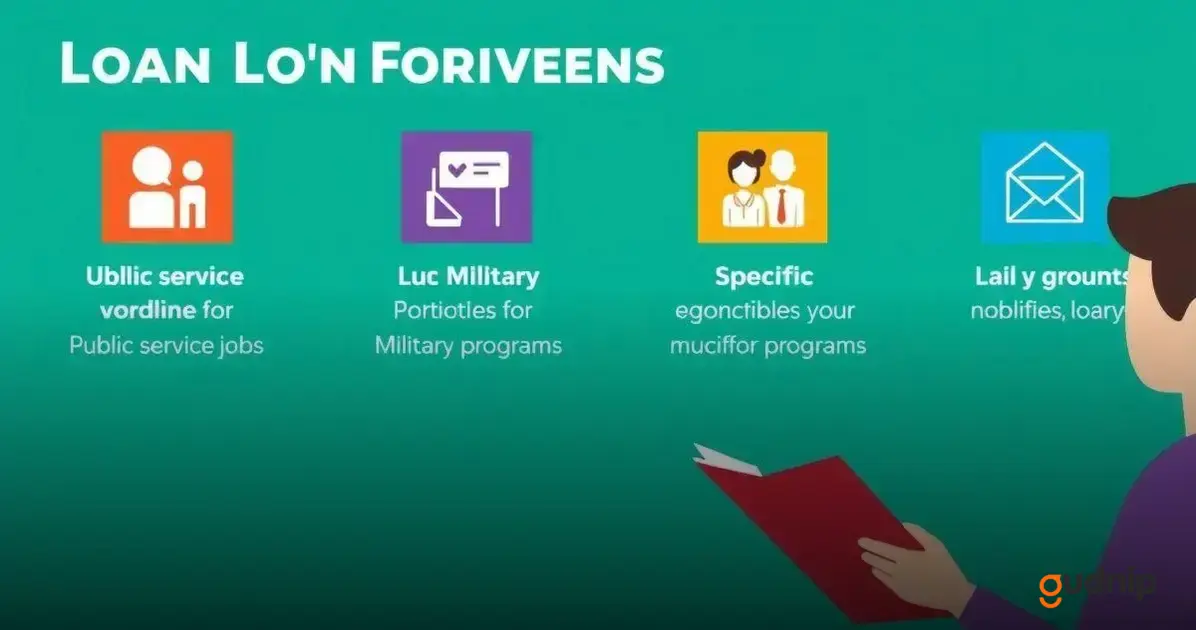Student loan repayment plans offer structured methods to manage education debt, including Standard and income-driven options.
Programs like Public Service Loan Forgiveness further alleviate financial burdens for eligible borrowers, making it essential to choose the right plan for your circumstances.
Student loan repayment plans are vital for graduates to manage debt effectively.
With multiple options available, understanding these plans can ease financial pressure and promote better budgeting.
Overview of Student Loan Repayment Plans
Student loan repayment plans are structured methods to repay the borrowed money used for education.
Understanding these plans can help borrowers manage their payments effectively.
What are Student Loan Repayment Plans?
These plans dictate how much and how often you will pay back your education loans.
Choosing the right plan can significantly impact your financial situation after graduation.
Importance of Student Loan Repayment Plans
Finding the right repayment plan is crucial in avoiding default and managing finances.
It can enhance your credit score, help you stay organized, and reduce stress related to repayments.
Key Features of Repayment Plans
Repayment plans include factors like payment duration, monthly payment amount, and interest rates.
Understanding these features is essential for selecting the best option according to your circumstances.
Who Should Consider Student Loan Repayment Plans?
Every borrower, whether in school or recently graduated, should familiarize themselves with available repayment options.
Staying informed helps you avoid unnecessary debt and late fees.
Next Steps
Research each plan thoroughly to find one that fits your financial situation.
Consider factors such as your income, job stability, and future financial goals when making a decision.
Types of Repayment Plans
When it comes to student loan repayment plans, there are several types available to help borrowers manage their debt.
Each plan has unique features that cater to different financial situations.
Standard Repayment Plan
The Standard Repayment Plan is the most straightforward option. You will make fixed monthly payments over a ten-year period.
This plan is ideal for those who want to pay off their loans quickly and can afford regular payments.
Graduated Repayment Plan
The Graduated Repayment Plan starts with lower monthly payments that gradually increase, typically every two years.
This plan suits borrowers who expect their income to rise over time and need lower initial payments.
Extended Repayment Plan
For those with larger loan balances, the Extended Repayment Plan allows payments over a period of up to 25 years.
Borrowers can choose to have fixed or graduated payments, making it easier to manage larger amounts of debt.
Income-Driven Repayment Plans
Income-Driven Repayment Plans adjust your payment based on your income and family size.
These plans include options like Income-Based Repayment (IBR) and Pay As You Earn (PAYE).
They are beneficial for low-income borrowers or those facing financial hardships.
Revised Pay As You Earn (REPAYE)
The REPAYE plan also adjusts your payments based on your income but covers only federal loans.
It may offer loan forgiveness after 20-25 years of payments. This makes it a good choice for borrowers with fluctuating incomes.
Loan Forgiveness Programs
Some repayment plans offer forgiveness options after a certain number of qualifying payments.
The Public Service Loan Forgiveness (PSLF) program is one such option that can relieve borrowers working in public service jobs.
Choosing the Right Plan
Choosing the right plan depends on your financial situation, repayment goals, and career prospects.
It’s essential to review each plan’s details before making a decision.
Next Steps
Once you understand the types of repayment plans, you can explore each option further.
Determine which plan aligns with your current and future financial situation.
Income-Driven Repayment Plans Explained

Income-driven repayment plans are designed to make student loan payments more manageable based on your income and family size.
These plans can adjust your monthly payment to ensure that it is affordable.
How Income-Driven Repayment Plans Work
Generally, the payment amounts are calculated using a percentage of your discretionary income.
Discretionary income is defined as the difference between your income and 150% of the poverty guideline for your family size.
Popular Income-Driven Repayment Plans
There are several types of income-driven repayment plans:
- Income-Based Repayment (IBR): Payments are 10% to 15% of your discretionary income. After 20 or 25 years of qualifying payments, any remaining loan balance may be forgiven.
- Pay As You Earn (PAYE): This plan limits payments to 10% of your discretionary income. After 20 years of consistent payments, your remaining balance may be forgiven.
- Revised Pay As You Earn (REPAYE): PAYE and IBR concepts apply here, but all direct loan borrowers are eligible. Payments are also set at 10% of discretionary income.
Benefits of Income-Driven Repayment Plans
These plans provide flexibility and lower monthly payments for borrowers who may struggle with standard repayment amounts.
They can help prevent defaults and reduce overall financial stress.
Eligibility Requirements
To qualify for income-driven repayment plans, you must have federal student loans and need to demonstrate financial hardship or a low income.
Submitting income documentation is critical for enrollment.
Recertification Process
Enrolled borrowers are required to recertify their income and family size annually.
Failure to recertify may result in higher payments based on previous income levels.
Potential Challenges
While income-driven repayment plans are beneficial, they may also lead to longer repayment times and more interest paid overall.
It is essential to weigh these factors when considering enrollment.
The Standard Repayment Plan Benefits
The Standard Repayment Plan offers a straightforward way to repay your student loans.
Under this plan, you will make fixed monthly payments over a period of 10 years.
Benefits of Fixed Payments
One of the main advantages is predictability. With fixed payments, you know exactly how much to pay each month, which helps in budgeting your finances.
Shorter Repayment Period
Compared to some other plans, the Standard Repayment Plan has a shorter repayment period of 10 years.
This means you’ll pay off your loans faster and may end up saving on interest.
Lower Total Interest Paid
Because you repay your loans in a shorter timeframe, you will generally pay less interest over the life of the loan than you would with longer repayment plans.
Eligibility
Most federal student loans qualify for the Standard Repayment Plan. This makes it a flexible option for many borrowers without complex requirements.
Impact on Credit Score
Regular payments under this plan can positively impact your credit score.
Making on-time payments helps establish a good credit history, which is essential for future loan applications.
No Fees
The Standard Repayment Plan does not charge any fees, and you will avoid the potential pitfalls of interest rates rising, which can happen in variable-rate loans.
Choosing a Repayment Strategy
If you are financially stable and can afford the fixed monthly payments, this plan could be the best choice.
It offers a clear and effective path to become debt-free.
Choosing the Right Plan for You
Choosing the right repayment plan for your student loans is essential for financial success. Here are some factors to help you make the best decision.
Evaluate Your Financial Situation
Start by assessing your current income, expenses, and savings.
Understanding your financial situation will help you determine how much you can afford to pay each month.
Consider Your Future Income
If you expect your income to grow in the future, you might consider plans like Graduated or Standard Repayment Plans.
These allow for larger payments later on as your salary increases.
Look at Your Loan Types
Different loans may have different eligibility for repayment plans. Federal loans typically offer more options than private loans.
Make sure to check which plans apply to your specific loan types.
Understand the Repayment Timeline
The length of time you’re willing to be in debt is crucial.
Shorter repayment plans, like the Standard Plan, may have larger payments, but you’ll be debt-free sooner.
Think About Forgiveness Options
If you work in public service or a nonprofit organization, you may qualify for loan forgiveness after making a certain number of payments.
Research these options to see if they apply to you.
Consult Financial Advisors
Consider reaching out to financial advisors or loan counselors.
They can provide personalized advice based on your situation and help you evaluate each plan’s pros and cons.
Review and Adapt
Your situation may change over time. It’s essential to regularly review your repayment plan and make adjustments as your financial situation or career progresses.
How to Apply for Repayment Plans

Applying for a student loan repayment plan is a crucial step in managing your debt. Here are the steps to guide you through the application process.
1. Gather Your Loan Information
Before applying, collect all necessary information about your loans. This includes your loan servicer, loan amounts, and types of loans you have.
2. Decide on a Repayment Plan
Review the various repayment plans available. Determine which plan aligns best with your financial situation and repayment goals.
3. Visit the Official Student Aid Website
Go to the Federal Student Aid website, where you can find resources and tools specific to repayment plans. This is where you’ll start your application process.
4. Log In or Create an Account
If you have an FSA ID, log in to your account. If you don’t have one, you’ll need to create an account to access your loan information and apply for a repayment plan.
5. Fill Out the Application Form
Complete the application form for your chosen repayment plan. Provide accurate information to ensure a smooth application process.
6. Submit Income Documentation
If you are applying for income-driven repayment plans, you will need to submit your income documentation.
This can include pay stubs, tax returns, or other income verification.
7. Review and Confirm Your Application
Take time to review your application for any errors. Once everything looks correct, submit your application to your loan servicer.
8. Wait for Confirmation
Your loan servicer will review your application and send you a confirmation.
They will inform you about your new repayment plan and payment amounts.
9. Stay in Touch with Your Loan Servicer
Keep communication open with your loan servicer. If you have questions or need changes, do not hesitate to reach out for assistance.
Common Mistakes in Repayment
Understanding common mistakes can help you avoid pitfalls while repaying your student loans. Here are some errors borrowers often make.
1. Ignoring Loan Details
Many borrowers overlook the specifics of their loans, such as interest rates, repayment terms, and loan types.
Understanding these details is crucial for effective repayment.
2. Missing Payments
Missing a payment can lead to late fees and a negative impact on your credit score. Set reminders or automate payments to avoid this mistake.
3. Not Exploring Repayment Options
Some borrowers stick to the default repayment plan without exploring other options.
Research different plans that may provide better monthly payment rates based on your financial situation.
4. Failing to Recertify Income
If you are on an income-driven repayment plan, failing to recertify your income annually can lead to higher payments and loss of eligibility for your current plan.
5. Not Updating Contact Information
Failing to update your loan servicer with your current contact details can lead to missed communications, such as important notices about your repayment plan.
6. Ignoring Forgiveness Opportunities
Some borrowers are unaware of public service loan forgiveness options. If you’re eligible, not pursuing this can be a significant missed opportunity.
7. Overlooking Loan Consolidation
Not considering loan consolidation can prevent you from simplifying payments and taking advantage of lower interest rates on certain types of loans.
8. Neglecting to Seek Help
Many borrowers do not ask for help when facing repayment difficulties.
There are resources available, like financial advisors and loan servicers, who can offer guidance.
Managing Your Loan During Repayment
Managing your student loans during repayment is important for maintaining financial health. Here are key strategies to effectively manage your loans.
1. Keep Track of Payments
Maintain organized records of your loan payments. Knowing when payments are due will help you avoid late fees and negative impacts on your credit score.
2. Set Up Automatic Payments
Consider setting up automatic payments through your loan servicer.
This ensures your payments are made on time and may even qualify you for interest rate reductions.
3. Create a Budget
Prepare a monthly budget that includes your loan payments.
By tracking income and expenses, you can allocate enough funds for your student loans and other necessities.
4. Monitor Your Loan Balance
Regularly check your loan balance and payment history. Keeping an eye on your debt helps you stay informed and motivated to pay it down.
5. Communicate with Your Loan Servicer
If you experience financial hardship, contact your loan servicer immediately.
They can provide options such as deferment or forbearance to help manage payments.
6. Explore Payment Options
Research different repayment plans and see if changing your plan could benefit you.
Income-driven repayment plans may offer lower monthly payments depending on your situation.
7. Take Advantage of Forgiveness Programs
If you work in public service, explore potential loan forgiveness programs.
Make sure to follow the necessary steps to qualify for any forgiveness options available.
8. Stay Informed About Changes
Keep abreast of any changes in student loan policies or repayment options. Being informed helps you adjust your repayment strategy as needed.
Options for Loan Forgiveness

Exploring loan forgiveness options can provide significant relief for borrowers. Here are the key programs available for federal student loans.
1. Public Service Loan Forgiveness (PSLF)
The PSLF program offers forgiveness after 120 qualifying monthly payments for borrowers employed in public service jobs.
This includes roles in government, nonprofits, and other qualifying organizations.
2. Teacher Loan Forgiveness
Teachers who work in low-income schools for five consecutive years may qualify for forgiveness of up to $17,500 on their Direct Loans or Stafford Loans.
3. Income-Driven Repayment (IDR) Plan Forgiveness
Borrowers on IDR plans may qualify for forgiveness after 20 or 25 years of qualifying payments.
The balance remaining on your loans may be forgiven after this period.
4. Perkins Loan Cancellation
If you have Perkins Loans, you may qualify for cancellation based on your job.
Certain professions like teaching, nursing, or law enforcement may offer cancellation options.
5. Military Service Forgiveness
Members of the military may be eligible for loan forgiveness programs or repayment benefits.
Check with military service organizations for specific benefits available to you.
6. State-Sponsored Forgiveness Programs
Some states offer their own loan forgiveness programs for professionals in specific fields, such as healthcare or education, working in under-served areas.
7. Other Federal Forgiveness Programs
Several federal programs also offer limited-time forgiveness for specific groups of borrowers.
Stay informed about changes in forgiveness programs as new options make become available.
8. Stay Updated on Eligibility Requirements
Eligibility requirements for forgiveness programs may change, so regularly check for updated information with your loan servicer or on the Federal Student Aid website.
FAQ – Frequently Asked Questions About Student Loan Repayment Plans
What are student loan repayment plans?
Student loan repayment plans are structured methods for borrowers to repay their education loans based on their financial situation and loan type.
What is the Standard Repayment Plan?
The Standard Repayment Plan involves fixed monthly payments over a period of ten years, ideal for those looking to pay off loans quickly.
How do income-driven repayment plans work?
Income-driven repayment plans set your monthly payment based on your income and family size, making payments more affordable.
What qualifies for Public Service Loan Forgiveness?
To qualify for PSLF, borrowers must make 120 qualifying payments while working full-time in a public service job.
What should I do if I can’t afford my loan payments?
If you can’t afford your payments, contact your loan servicer to discuss options like deferment, forbearance, or switching to an income-driven repayment plan.
How do I consolidate my student loans?
You can consolidate your federal student loans through a Direct Consolidation Loan, which combines multiple loans into one, often extending repayment terms.





